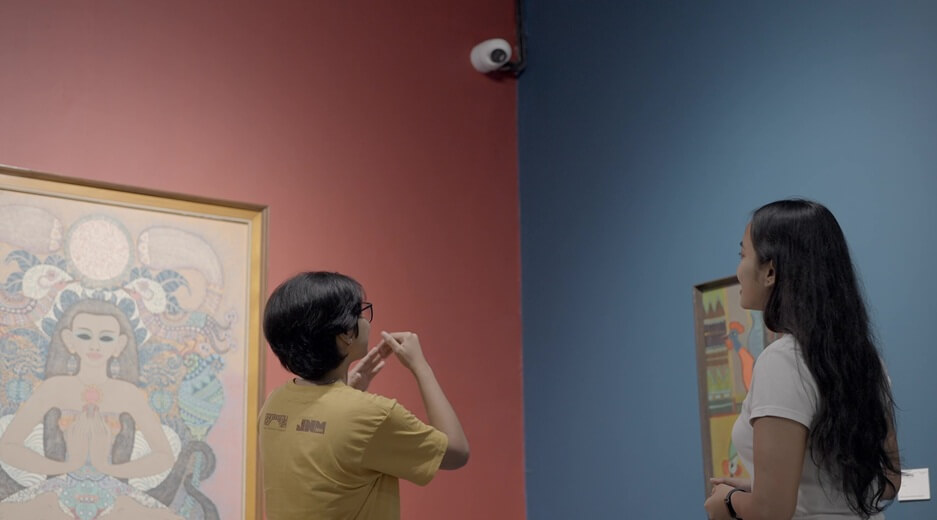When Jogja National Museum in Yogyakarta, Indonesia needed to protect priceless artworks while maintaining visitor accessibility, they turned to a smart security solution.
When Jogja National Museum in Yogyakarta, Indonesia needed to protect priceless artworks while maintaining visitor accessibility, they turned to a smart security solution. This story reveals how this intelligent security system transformed their operations, reducing response times from hours to minutes, and enhancing protection of modern masterpieces by artists such as Affandi and Bagong Kussudiardja.
The quest for comprehensive artwork protection
Jogja National Museum stands as a guardian of Indonesia's artistic heritage, welcoming over 100,000 visitors each year to experience the country's rich cultural legacy. The institution houses an impressive collection that includes masterpieces by contemporary painters like Affandi, Abas Alibasyah, and Bagong Kussudiardja.
But as the institution’s reputation grew, and visitor numbers increased, the museum team recognized the need for a more comprehensive approach to artwork protection. As custodians of Indonesia's artistic treasures, they recognized the need to enhance the security of their valuable collections while maintaining an enjoyable experience for visitors.
"As museum caretakers, we're not just preserving artworks—we're safeguarding the nation's identity," explained Arka Njela Tevua Lestavi, the Marketing Manager at Jogja National Museum. “But the challenges are real: how do we ensure these pieces remain intact, meaningful, and accessible for future generations?”
The museum team wanted to establish a system that could provide consistent monitoring throughout their galleries, particularly during busy periods and special exhibitions. The system should also help staff respond more effectively to various situations while maintaining the welcoming atmosphere that visitors expect. The goal was to create an environment where cultural preservation and visitor accessibility could coexist seamlessly.
Deploying an AI-powered protection system
To address these needs, Jogja National Museum partnered with Hikvision to create a protective network throughout the museum's gallery spaces. Four 4 MP ColorVu with Smart Hybrid Light Fixed Bullet Network Cameras (DS-2CD1047G2H-LIUF(2.8mm)) and four 2 MP Smart Hybrid Light Fixed Turret Network Cameras (DS-2CD1321G2-LIUF/SL(2.8mm)) have been strategically placed across the exhibition areas.
These cameras provide continuous, high-quality color imaging even in challenging lighting conditions. With the Smart Hybrid Light technology, the cameras maintain infrared illumination at night when the museum is closed and lights are turned off, until an event triggers color imaging to capture critical details. The cameras also feature built-in audio capabilities and alert systems that allow security staff to provide guidance to visitors directly from the command center if necessary.
At the heart of the system is an AcuSeek NVR (DS-7616NI-Q2). This uses sophisticated algorithms to distinguish between normal movement and activities that require attention. It can, for example, identify when someone approaches restricted areas or lingers too close to artworks, while intelligently filtering out routine activities like cleaning. Moreover, powered by Hikvision’s Guanlan large-scale AI models, the AcuSeek NVR utilizes massive parameter training and sample datasets to establish cross-modal text-image comprehension capabilities. Museum staff uses the smart search functions, such as Target Search and Intrusion Event Search, to streamline incident reviews and improve response times.
Improved protection, faster response, better service

The implementation has brought significant improvements to the museum's daily operations and long-term preservation goals. The most immediate benefit has been enhanced protection for the artwork collection. Staff can now respond quickly and appropriately to various situations, whether it's guiding visitors away from restricted areas or addressing concerns before they escalate. Ms. Lestavi noted, “We now have a peace of mind we never had before. This intelligent technology respects cultural values. For us, it’s not just a tool. It’s the new guardian of Indonesia’s legacy.”
The system's intelligent features have dramatically improved operational efficiency. Video review processes that previously required over an hour can now be completed in just a few minutes using the AcuSeek smart search functions. This time savings allows staff to focus more attention on visitor services and collection care rather than lengthy manual reviews.
Another valuable feature has been the system's ability to assist with visitor services. When guests misplace personal items during busy exhibitions, the smart search capabilities enable staff to quickly locate lost belongings. Not long ago, security staff has successfully recovered a visitor's camera during a crowded exhibition by rapidly reviewing footage to identify where the item was left behind.
Building on this success, Jogja National Museum plans to extend the solution to a three-story complex hosting the prestigious annual "Artjog" festival. The museum's transformation showcases how AIoT (AI-powered Internet of Things) can revolutionize cultural preservation, proving that technology and heritage protection create a powerful partnership for safeguarding artistic legacies.